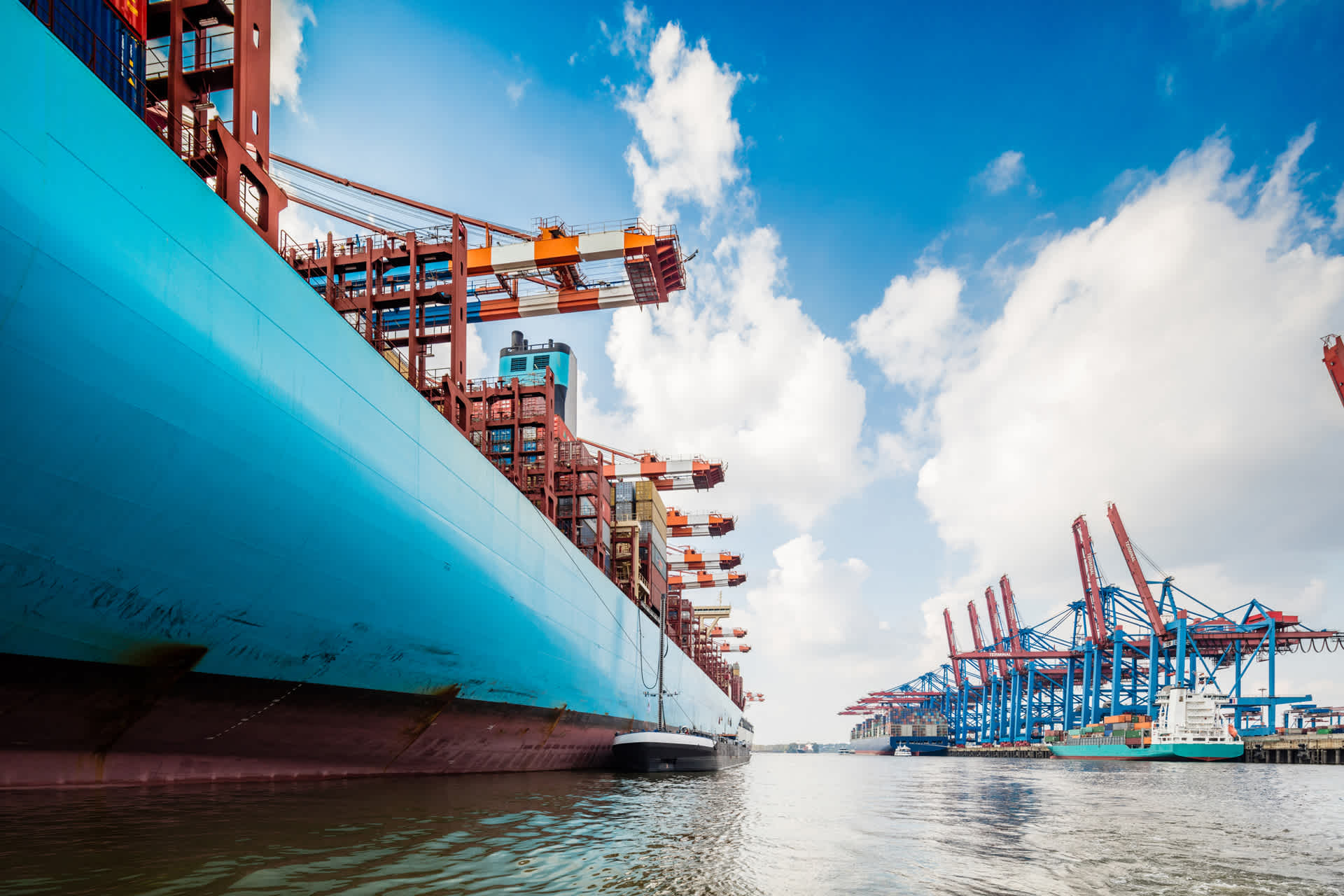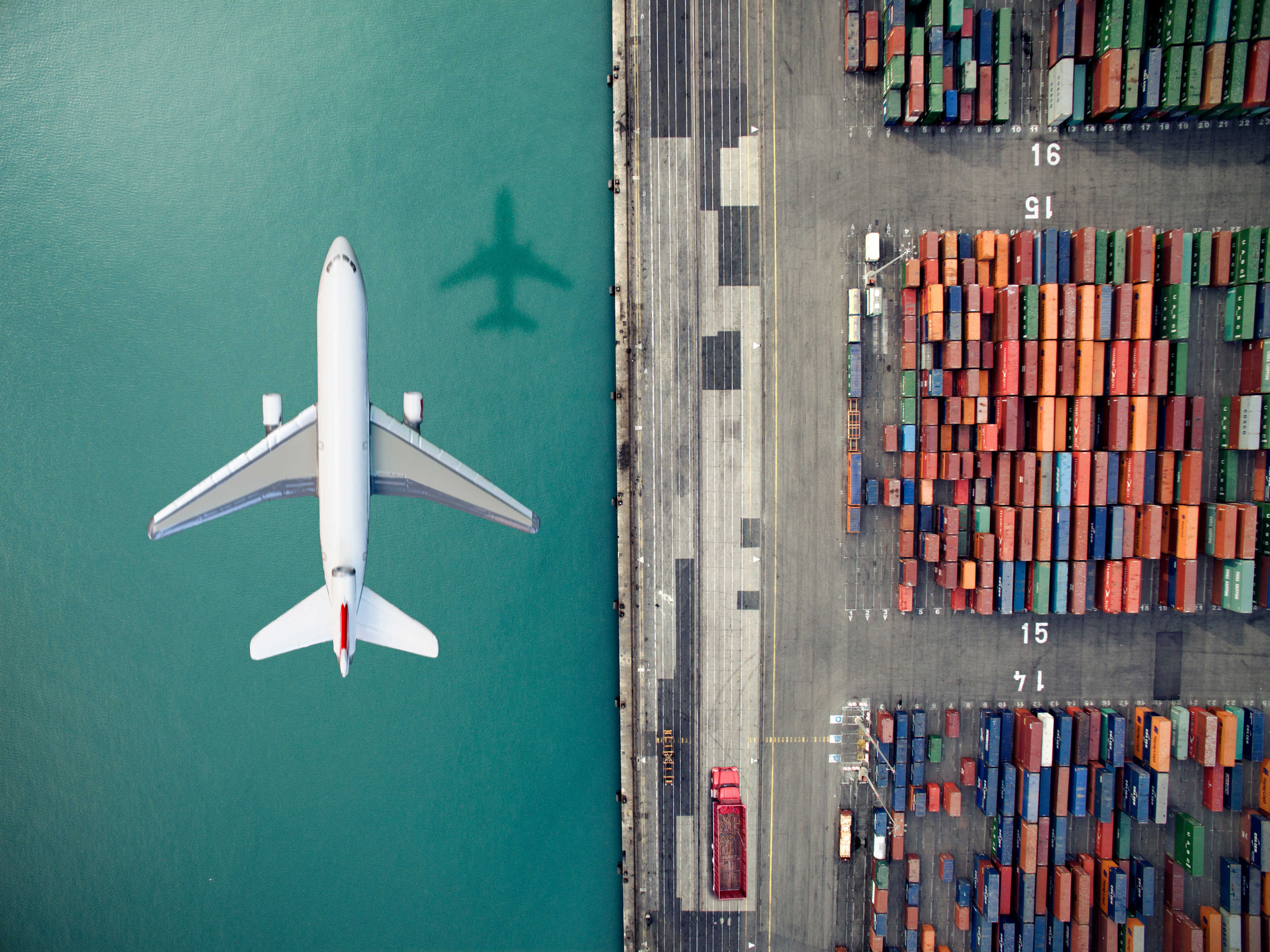Global Logistics Update
Freight Market Update: December 8, 2020
Ocean and air freight rates and trends; customs and trade industry news plus Covid-19 impacts for the week of December 8, 2020.
Freight Market Update: December 8, 2020
Ocean Freight Market Update
Asia → North America (Transpacific Eastbound)
- GRI December 1 implemented: Rates have increased slightly due to equipment imbalance issues persisting in Asia. Carrier backlog for cargo is growing, and it’s becoming increasingly difficult to secure containers in Asia.
- Capacity: Recommend advanced booking notice 21 days prior to CRD. Ningbo, Southeast Asia and Busan are among POLs with greatest equipment shortages.
- Please ask your dedicated Client Solutions team about alternative equipment solutions offered on select lanes.
Asia → Europe (Far East Westbound)
- Rates: Increased
- GRI December 1: Implemented
- GRI December 15: Will be implemented
- Capacity: Recommend advance booking notice at least 21 days prior to CRD.
- Notes: Very strong market and severe equipment shortage expected to last through CNY 2021. All carriers applied a big Dec 1 increase and there will be another Dec 15 increase. Advise flexibility on equipment substitution (40’ST, 40’NOR and 20’DC instead of 40’HC). Urgent shipments should be booked on premium as necessary. Widespread restrictions for UK cargo due to port congestion and haulage limitations. Expect delays and operational issues. Some carriers have stopped booking acceptance for the UK, where only premium services are now recommended.
- Turn here for further details on FEWB.
Europe → North America (Transatlantic Westbound)
Rates: North Europe: Steady; Mediterranean: Increased
GRI December 15: Likely Implemented ex-North Europe origins
GRI January 1: Likely Implemented (North Europe and Med)
Capacity: Recommend advanced booking notice 21 days prior to CRD.
Notes: Strong market expected to continue through December with no sign of downtime into the new year. All carriers report vessel space fully utilized with high risk of cargo rolls expected to persist through year end. Premium options available with some carriers across the main ocean alliances.
Equipment shortages in Italy, Spain, and Portugal in particular for 40/HC containers. Ongoing severe EQ shortages in Turkey.
Capacity development: New blank sailings announced by The Alliance and Ocean Alliance in week 52 (-12%) and 53 (-15%) from Mediterranean ports due to expected downfall in demand over the Christmas and New Year holidays.
Turn here for further details on TAWB.
India → North America
- Rates: Steady
- GRI December 1: Most carriers implemented increases
- GRI December 15: Pending
- Capacity: Tight due to limited equipment and feeder port omissions
- Equipment: Continues to be an issue—please make bookings in advance so we can plan for container availability at your local ICD/wet port. Equipment is especially limited in South India ports.
- Colombo congestion and work shortages are significantly delaying transhippments. Feeders from South India to Colombo are decreasing in frequency due to the congestion. Carriers are redirecting cargo to other transshipment ports such as Mundra or Port Klang.
North America → Asia
- GRI December 15: Increased
- Capacity: Recommend advanced booking notice 7-10 days prior to CRD at Port.
- Capacity: Recommend advanced booking notice 10-14 days prior to CRD at Rail Ramp.
- Chassis availability is tight at most major ports and rail ramps. Recommend factoring in more lead time for truckers to procure chassis.
- Space constraints increasing from US Gulf ports.
- Pearl River barge service to be closed for January to avoid arrivals during the Chinese New Year. In response, several carriers have already ceased export bookings.
North America → Europe
- Rates: Steady
- GRI January 1: A major ocean carrier has announced a $150 per TEU Congestion Surcharge for all shipments destined to the UK effective 1/1/2021.
- Capacity: Recommend advanced booking notice 7–10 days prior to CRD at port.
- Capacity: Recommend advanced booking notice 10–14 days prior to CRD at rail ramp.
- Chassis availability is tight at most major ports and rail ramps. Anticipate more lead time for truckers to procure chassis.
- UK ports continue to be heavily congested. Carriers are implementing ad-hoc port omissions and discharging containers at North Europe ports, delaying arrival times.
Air Freight Market Update
Asia
- Air market continues to be strong in the last few weeks prior to the Christmas holiday. Capacity is very tight and this has been further exacerbated by the Covid outbreaks at terminal handling facilities in the US leading to several flight cancellations.
- All indications are pointing to very similar peak season market conditions in January leading up to CNY.
- Flexport will be expanding its charter network more than 50 percent starting in January to meet the strong demand.
Europe
- Automotive/Manufacturing Industry Verticals keep having strong output out of Europe, driving air freight rates ex central Europe and the U.K. higher. Vaccine shipments ex Europe to the U.S. are being conducted, but since output is still fairly low, the impact will be limited.
Americas
- Airline terminals in LAX continue to deal with an operationally challenging environment, due to high cargo volumes and labor shortages caused by COVID. ORD/JFK/ATL/MIA are facing similar high influx of cargo activity, but do not report labor shortages as severe as LAX.
- Carrier offerings stay stable and outbound capacity to Asia, LATAM and Europe are readily available. The reported cancellations of some rotations into LAX from certain asian carriers have not yet negatively impacted the market’s capacity.
Factory Output News
Bangladesh exports over $3.1 billion in November with garments contributing $2.4 billion. Overall exports are up 0.7% year over year, however garments are down around 4% year over year source]
Sri Lanka’s industrial production showed resilience towards COVID in September with the Index of Industrial Production (IIP) reaching 108.4 against 107.2 last September. [source]
Malaysia, in an effort to balance public health and economic concerns, has permitted renewed interstate travel from Dec 7, though certain restrictions still apply for KL, Selangor and Sabah. source]
Singapore/HK travel bubble put off to new year as COVID cases rise, exact date to be determined later in December. [source]
Indonesia received 1.2mil doses of covid vaccine from China Sinova and plans to receive 1.8mil more in Jan 2021 [source]
Vietnam Foreign Direct Investment (FDI) continues to grow despite COVID-19. [source]
Vietnam's largest conglomerate, Vingroup, has signed a contract to produce smartphones for AT&T in the U.S., marking the next phase in its aggressive expansion into overseas markets. [source]
South Korea’s daily COVID cases could exceed 900 in the coming week as current cases reached above 600 for the second day [source]
Updates from Flexport's Customs & Compliance Team
CBP Issues Detention Order on Cotton Products Using Prison Labor from XPCC
A December 2nd posting on Customs & Border Protection’s (CBP) website announced that CBP personnel would immediately begin detaining shipments containing cotton, cotton products, and apparel, garments, and textiles with cotton originating from the Xinjiang Production and Construction Corps (XPCC) or any of its affiliates. CBP issued a Withhold Release Order (WRO) on XPCC cotton and cotton products due to the involvement of forced and convict labor. The WRO is the sixth enforcement action CBP has announced in the past three months against goods produced with forced labor from China’s Xinjiang Uyghur Autonomous Region.
Tom Gould, Flexport’s Vice President of Global Customs, took to LinkedIn to share strategies to help companies ensure that their supply chain is not sourcing cotton made with forced labor from China’s Xinjiang Uyghur Autonomous Region, including:
- Map the supply chain including all raw materials from the cotton farm to the final cut and sew factory, "from dirt to shirt."
- Identify and gather basic information (name, address, manufacturing capacity) on all suppliers throughout the supply chain.
- Reach out to suppliers, ask where they source their cotton and require written responses.
- Review your PO terms and conditions and if needed, add clauses to prevent suppliers from using unknown sources of cotton or cotton sourced using forced labor.
- Modify social compliance procedures to include review and inspection of all facilities for suppliers all the way back to the cotton supplier.
- Consider joining supply chain security and compliance programs like CTPAT and AEO.
Biden Administration will not Immediately Remove Trump China Tariffs
President-Elect Joe Biden told columnist Thomas L. Friedman in a December 2nd interview in the New York Times that he was not going to immediately remove the 25% Section 301 Tariffs imposed by the Trump administration on imported goods from China. Biden plans to prioritize rebuilding and leveraging partnerships with the U.S.’s traditional allies in Europe and Asia to “develop a coherent strategy” in pursuing trade-policy reform with China.
Economic highlights from Flexport Chief Economist Dr. Phil Levy
- A weak US November jobs report shows nonfarm payroll employment rose by 245K, while the unemployment rate fell to 6.7%. The increase in jobs was smaller than expected and left employment 9.8m jobs below the February level. Further, the surveys were conducted in the first half of November, before the worsening of the pandemic.
- The unemployment rate was 3.2 percentage points higher than in February. Its fall also reflects people leaving the labor force. The number of people not in the labor force who wanted a job increased by 448K.
- The US Federal Reserve’s Beige Book reports worries. The regular report on regional economic conditions around the country found higher-than-average growth of manufacturing, distribution and logistics, but mounting concerns about loan delinquencies and the pandemic.
- US October trade expands. For the first month of Q4, imports of goods and services were up 2.1%, and exports were up 2.2%.
- Measuring from January to October, the politically salient trade deficit went from $474B in 2018 to $490B in 2019 to $537B in 2020.
- Chinese trade jumps in November. Measuring from November of 2019, exports were up 21.1% in dollar terms. Imports were up 4.5%.
- China’s strong rebound also seems to be driving up global metal prices.
- EU inflation runs negative for the fourth straight month in November, reflecting weakness.
Freight Market News
Airlines Prepare for Dry Ice Airlines are requesting the Federal Aviation Authority allow increases in the amount of dry ice they can carry. The Wall Street Journal explains that Covid-19 vaccines require sub-freezing temperatures to remain stable, so current limits on the dangerous good aren’t high enough to move the projected number of doses the world needs.
Returns Drive Warehouse Demand This year’s rapid shift to e-commerce, a result of pandemic-related social distance, is creating demand for space to manage reverse logistics. According to FreightWaves, new warehousing requires more space than forward logistics, although some retailers may have to repurpose current distribution centers while awaiting new builds.
Carriers Suspend South China Service Citing reduced local feeder capacity, a slew of carriers announced cancellations throughout South China for the month of January. The Loadstar reports deep-sea carriers have not announced related cancellations yet, but suspensions are expected ahead of the Chinese New Year.
Freight Market Update is a free service from Flexport, the modern freight forwarder. If you're not already a subscriber, we invite you to subscribe here.
Please note that the information in our publications is compiled from a variety of sources based on the information we have to date. This information is provided to our community for informational purposes only, and we do not accept any liability or responsibility for reliance on the information contained herein.


